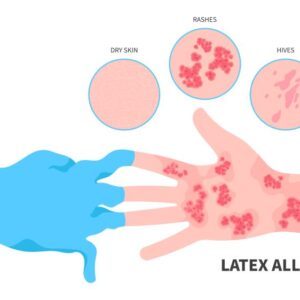Understanding and Managing Food Allergies: A Practical Guide

Introduction
Food allergies are a growing health concern that affect millions of people worldwide. Understanding how to identify, manage, and treat food allergies is essential for those affected and their families. In this article, we’ll cover the basics of food allergies, common allergens, symptoms, and tips for managing them safely.
What Are Food Allergies?
Definition:
- A food allergy is an immune system reaction that occurs after eating a certain food. For some, even a small amount of the allergen can trigger symptoms.
Common Food Allergens:
- The most common allergens include peanuts, tree nuts, milk, eggs, wheat, soy, fish, and shellfish. These foods account for about 90% of all food allergies.
Difference Between Allergy and Intolerance:
- A food allergy involves the immune system, while a food intolerance involves the digestive system. Intolerances, such as lactose intolerance, typically do not cause life-threatening reactions.

Symptoms of Food Allergies
Mild to Moderate Symptoms:
- Symptoms of a food allergy can include hives, itching, nausea, vomiting, stomach pain, and runny nose. Mild reactions often appear within minutes to a few hours of eating the allergen.
Severe Symptoms (Anaphylaxis):
- Anaphylaxis is a severe allergic reaction that can be life-threatening. Symptoms include difficulty breathing, swelling of the throat, rapid pulse, and loss of consciousness. Immediate medical attention is necessary in cases of anaphylaxis.
Managing Food Allergies
Read Food Labels Carefully:
- Always check ingredient labels for potential allergens. Manufacturers are required to list common allergens on product labels, but it’s still essential to be vigilant.
Avoid Cross-Contact:
- Cross-contact occurs when an allergen comes into contact with a food that doesn’t contain it. Use separate utensils, cutting boards, and cookware for allergen-free foods.
Prepare Meals at Home:
- Preparing meals at home allows you to control ingredients and avoid accidental exposure to allergens. Be cautious when dining out, and inform the restaurant staff of your allergy.
Carry an Epinephrine Injector:
- For individuals with severe allergies, an epinephrine auto-injector (such as an EpiPen) is crucial in case of accidental exposure. Make sure you know how to use it and keep it with you at all times.
Inform Friends and Family:
- Educate those around you about your food allergy to ensure a safe environment. Make them aware of the symptoms and how to respond in case of an emergency.
Conclusion
Food allergies require careful management to prevent reactions and ensure safety. By reading labels, avoiding cross-contact, preparing meals at home, and carrying an epinephrine injector, you can manage food allergies effectively. Understanding the signs and symptoms of allergies is key to staying safe and maintaining a healthy lifestyle.
Summary:
- Food allergies are immune reactions to certain foods, with common allergens including peanuts, tree nuts, and shellfish.
- Symptoms range from mild (hives, stomach pain) to severe (anaphylaxis), which requires immediate medical attention.
- Management tips include reading food labels, avoiding cross-contact, preparing meals at home, carrying an epinephrine injector, and informing others about the allergy.

This article reviewed by Dr. Jim Liu, MD and Ms. Deb Dooley, APRN.
There’s nothing more important than our good health – that’s our principal capital asset.
#medical #telehealth #umedoc










